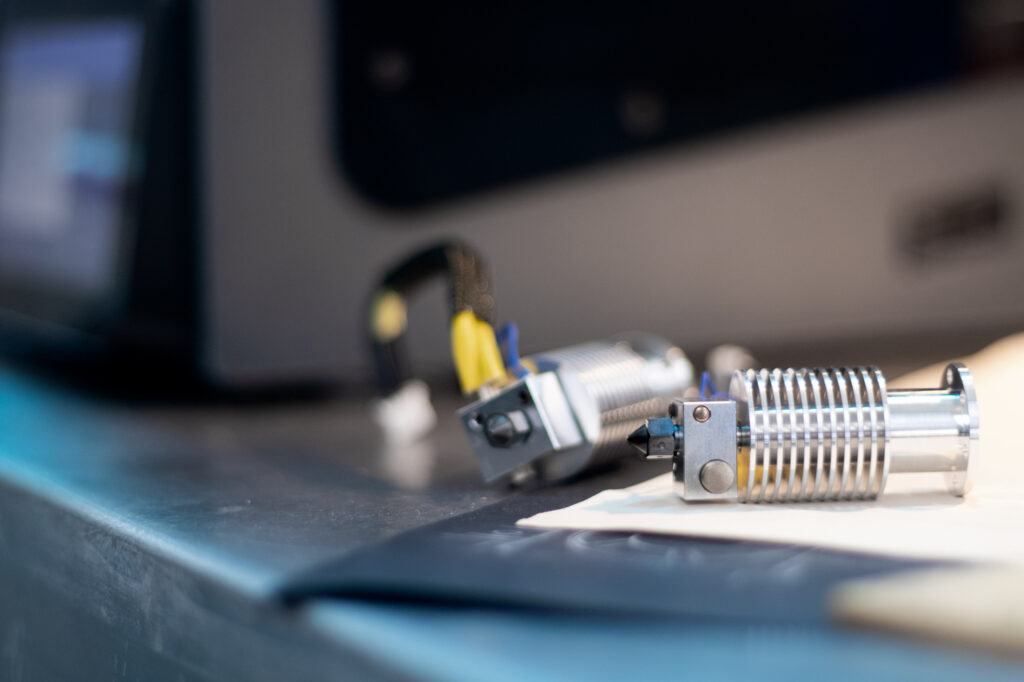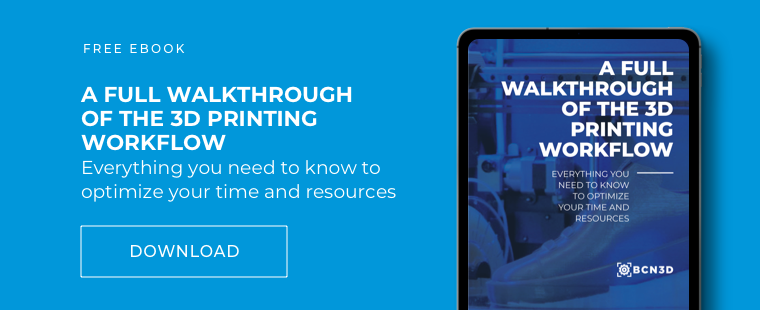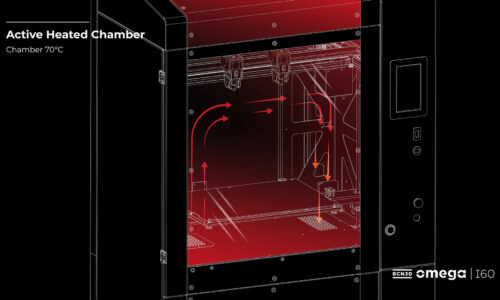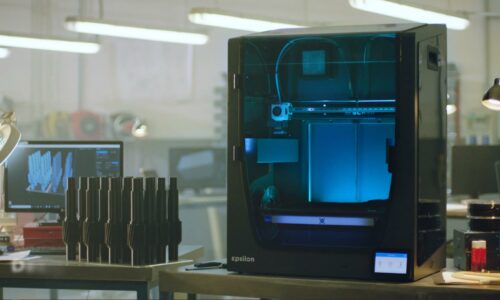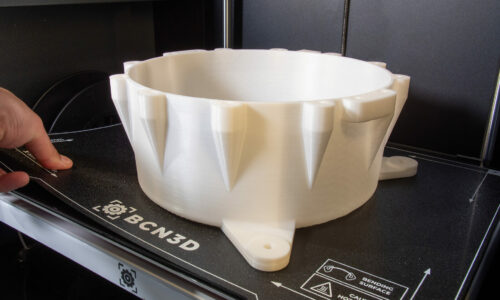3D Printer Extruder: Basic Buyer’s Guide
The 3D printer extruder is a crucial piece of equipment in your 3D printer.
FDM printers work by depositing filament layer by layer to build a model. The extruder is the tool that moves, heats, and pushes the filament out of the printer. The type of extruder and hotend that you use can change the quality and style of your print, so it’s no wonder that this is considered an essential part of any 3D printer.
In this article, we’ll review the basic information you need to know about 3D printer extruders and hotends.
What is a 3D Printer Extruder?
An extruder is the part of the 3D printer that is responsible for pushing the filament along, melting it, and placing it on the bed to build the model. A 3D printer extruder is made up of many different tools that do a combination of different jobs. Namely, there is a coldend and a hotend.
For the sake of this article, we will refer to the extruder as the entire piece of the 3D printer that moves, melts, and deposits filament – essentially, the coldend and the hotend. Others may refer to the extruder as simply the piece that moves the filament, and the hotend as the piece that melts.
- The cold end is responsible for moving the filament along to direct it to the hotend. A motor and gear work to guide filament, either through a PTFE tube or directly into the hotend. There are two different types of coldends that work a little bit differently, which we’ll review in the next section.
- The hotend heats, melts and extrudes the material layer by layer through a nozzle. Two of the most important components within the hotend are:
- The heater, which heats and melts the filament.
- The nozzle, which directs the filament as it is extruded.
3D Printer Extruder Types
There are two main types of extruders that you will find on professional 3D printers: Direct and Bowden. Some types of 3D printers also feature a dual extrusion. Let’s review the difference between all three.
Direct Extruder
In a direct extruder, the filament runs from the cog, to the coldend, to the hotend, all in one piece. This means that the drive and the gear that moves the filament along is directly above and attached to the hotend.
Because the extruder sits directly on top of the hotend, the extruder itself is heavier and slower. However, many prefer to print flexible 3D filaments using a direct extruder. With a direct extruder, the filament has less distance to travel before getting melted and deposited. Consequently, there’s less opportunity for issues during the extrusion process.
Bowden Extruder
In a bowden extruder, the coldend and the hotend are separated by a PTFE tube where the filament runs along. Instead of the coldend sitting directly on top of the hotend, a tube separates the two pieces.
As opposed to a direct extruder, a bowden extruder is much lighter and faster, because the only moving part is the hotend. The coldend, with the drive, is positioned on a fixed point on the printer.
Bowden extruders print high-quality models and are great for printing models that feature long, continuous designs. It used to be said that flexible materials can’t be used with a bowden extruder, but that is an outdated thought. As long as there is no room for the filament to move or wiggle, it will be able to move just fine through the tube into the hotend.
Dual Extruders
Along with different styles of extruders, some printers can also be equipped with two or more extruders.
Dual extruders allow you to print multiple materials at once, or even print two models at the same time. Dual extrusion allows you to accelerate your printing process because there are now two tools moving, melting, and depositing filament.
The dual extruders can also feature an independent dual extrusion system (IDEX). That means the extruders work independently from one another. So, even though typical dual extruders move together at the same time, IDEX extruders function freely from each other. As a result, they are opening the possibilities of increased efficiency, higher productivity, and time-saving.
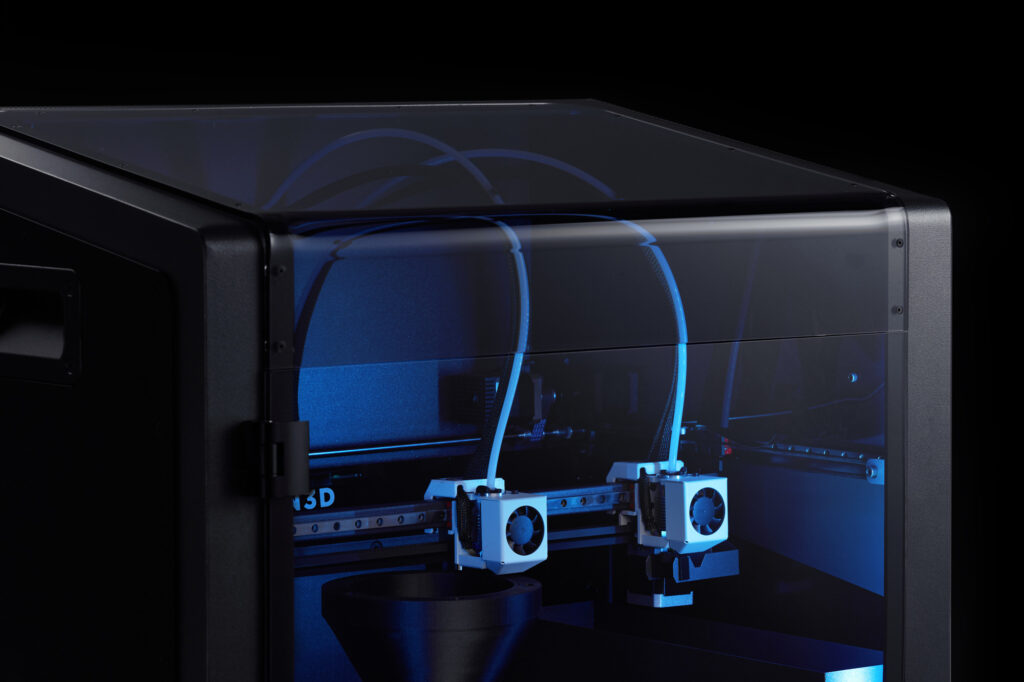
Hotends
We can’t talk about extruders without touching on the hotend. As mentioned before, hotends are the piece of the extruder that is responsible for melting and extruding the filament onto the bed.
You can customize your hotend depending on the nozzle you attach. Because the filament is pushed through the nozzle, the size and type of nozzle you choose will have a major impact on the style and effectiveness of your model.
There are many different types of nozzles you can choose and place on your 3D printers, depending on the type of material you’re printing or the design you have in mind. This topic is so extensive, that we’ve dedicated an entire article to it, which you can read here.
Should you run into trouble
If you’re experiencing difficulties regarding these printer parts, it’s most likely to be down to the most common printing issue in 3D printing: underextrusion. This pesky problem is when there’s a lack of extruded material in the printed part that presents itself as either no filament being extruded from the hotend, missing layers or spongy prints. Underextrusion occurs due to one of the following faults:
- outdated software
- wrong choice of material
- the state of your bowden tubes
- a lack of cooling
- issues with the hotend
- issues with the extruder board
- the extruder motor failing to push the filament properly
For more information on how to combat each of these contributing factors, have a read of this article featured on our BCN3D Knowledge Base, which is crammed full of tips and tricks to get you through the trickiest of print jobs.
How much does a 3D Printer Extruder cost?
In BCN3D we offer two types of extruder motors: the Extruder Motor R and the Extruder Motor L, plus the extruder kit where both are included. Prices go from 130€ each to 180,15€ for the kit.
Moreover, here you can find a wide variety of hotends and their prices.
Lastly, BCN3D offers an extruder board for the price of 15€.
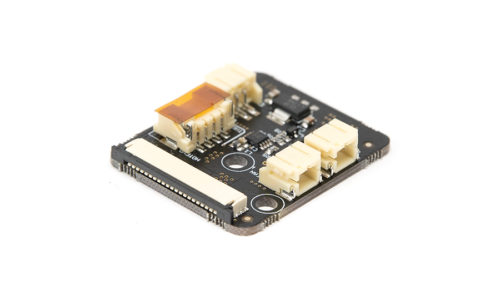
Final Thoughts
Next time you look at your 3D printer, you’ll feel a little more appreciative of all the work going on in that small piece of equipment called an extruder. As with many other aspects of 3D printing, understanding this tool and its work will help you become a more efficient user and significantly improve the quality and properties of your prints.


